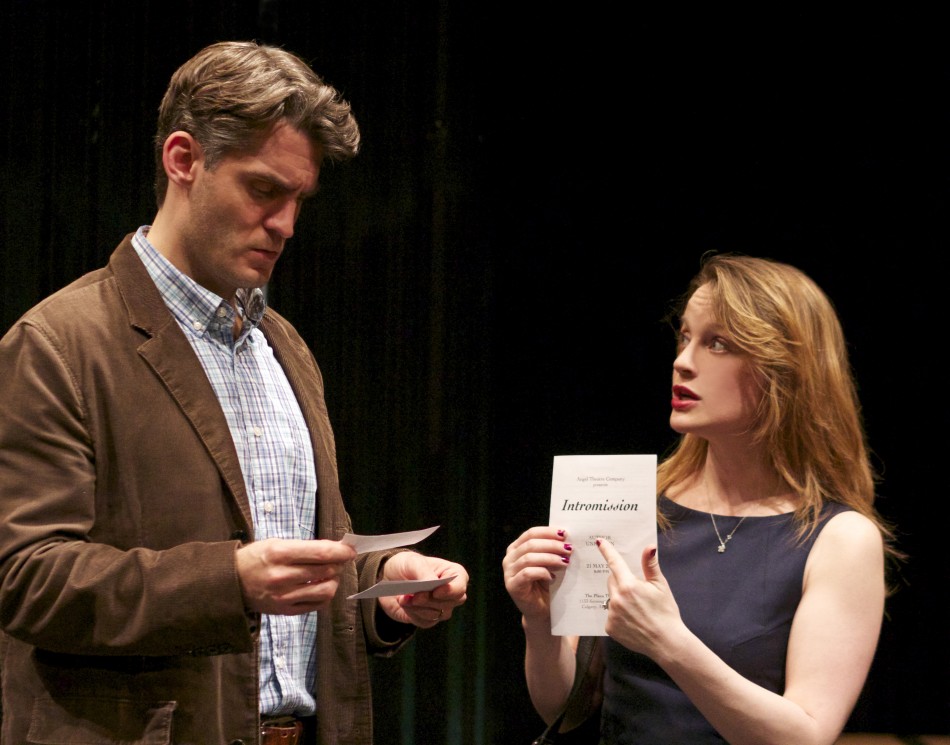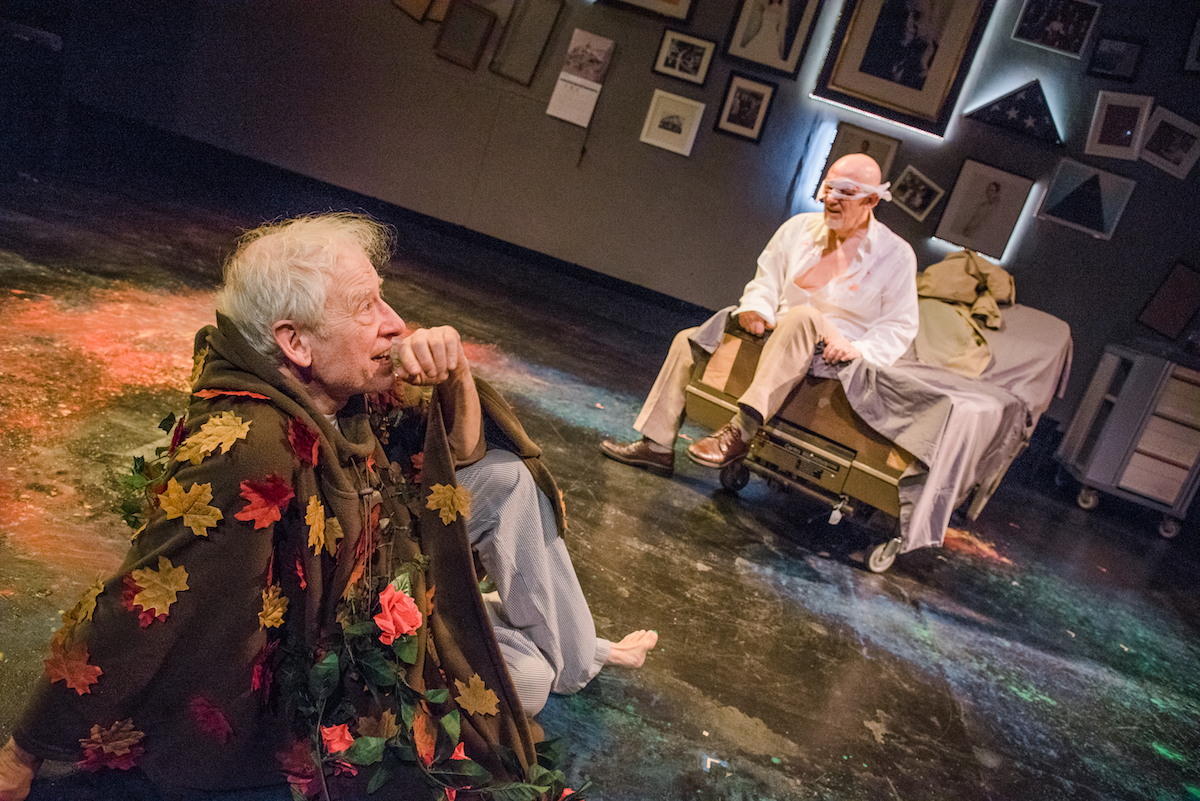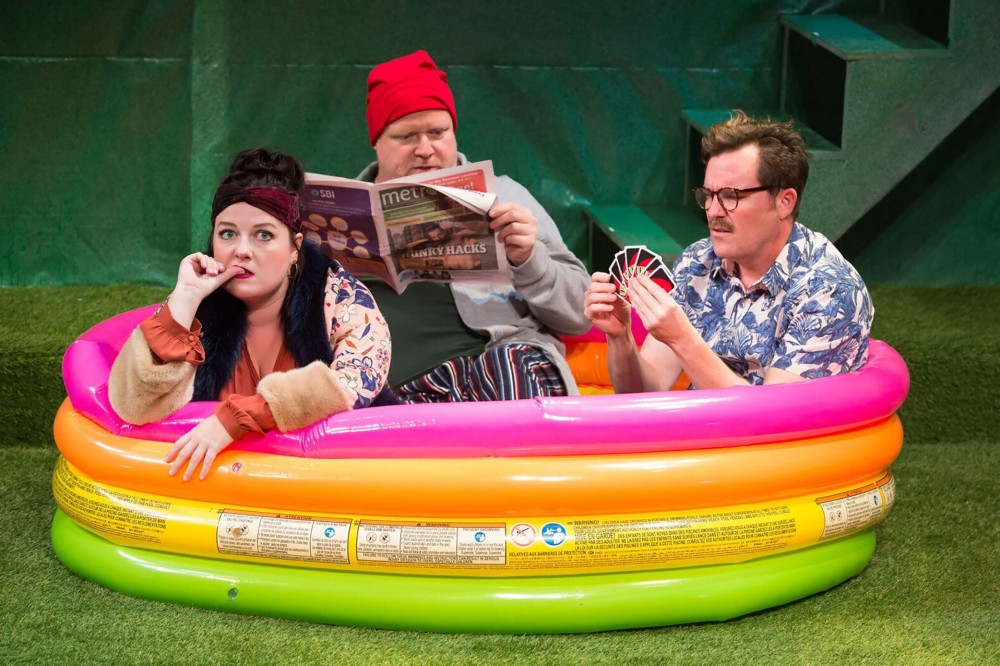NY Theater Reivew by Joshua Rose
A self referential play about theater, that’s nothing new. A play with another play within it, also not new. A play about being an audience member, set during those pre-show, intermission, post-show moments, that’s getting more interesting. Now take that play, make it the most meta piece of theater yet written, give the often-commented-on (but never seen) play-within-the-play a plot very similar to the play itself and have the characters deconstruct all the elements they themselves are about to be a part of, and add liberal doses of comedy both broad and high-minded. The result will be Intermission, by Daniel Libman, a fun and thought provoking look into the mirror-on-life that theater can be. Or is it art imitating art?
As I already mentioned this is the most blatantly “meta” play this reviewer has ever seen or read. That isn’t a bad thing, because it’s also the most thoughtful and detailed use of the meta convention From the set design of a theater lobby, that references the theater lobby you just exited (complete with a flat screen monitor offering a view of a stage set very similar to the one it is a part of, to the start of show title slides that play on that monitor. The first slide says “INTERMISSION”. The second slide is identical with the words “there will be no” added above the title. It just gets more self referential from there. With the characters complaining about theater conventions, like ending a scene with a sudden and un-established gay kiss, the play you are watching uses just moments later. These comments on what constitutes good theater and what roles theater can play in our lives are reflected directly in the structure of the play as it makes those comments. Some of the fun comes from realizing the characters are critiquing their own existence without knowing it, and then watching as that realization dawns on them. It is at that turn in the play, the realization of how the play-within mirrors the play itself, that the show reveals its seams.
In the third act, as each character realizes what is actually going on, as the play changes from a farce to a tragedy, the characters each experience a change of character. This duality of style and character is another theatrical convention that gets maligned by a character in the play, which makes this reviewer think that it was not by accident but by writer Daniel Libman and director Wayne Maugan’s design. The point of which being that we are all made up of multiple character traits and stressful situations can cause us to drop our public veneer and reveal our true selves.
Blake, played by Michael Brusasco, who provided most of the laughs in the first two acts playing the wisecracking, expressive faced, doltish husband becomes a heartbroken romantic, fighting to keep his life from falling apart. Margot White’s nervous nelly Lori, who can’t sit still, stop talking or figure out what to do with her hands while she berates her husband for acting like a straight man, becomes almost catatonic. Unable to find or say the words the other characters are looking for, she stares in horror as the plan she executed unfurls with devastating results she never considered. Gabe, played by Carol Todd, starts as everybody’s upbeat and supportive friend, and ends as the most despicable insensitive character of the group. One moment berating Blake for selfishly demanding an answer from his wife, she then demands her own answer to the same question from the same character just moments later. Tina, played by Jessica Griffin, makes the biggest jump in character. she goes from a ditzy uncultured dental assistant, to an astute observer and critic of the play-within and a well spoken social critic of the actions of the other characters. Ms Griffin skillfully plays double duty (or is it triple?) when she comes back as Tina’s twin sister Nina. Yes, they even comment on those rhyming names in the play.
While the sudden shift in tone and character is a little jarring, Intermission entertains throughout and leaves the audience thinking. But, please, don’t say it’s “just a play”. It runs approximately 90 minutes at the Clurman Theater at Theater Row on 42nd street.
Photos: Jon Leong
























